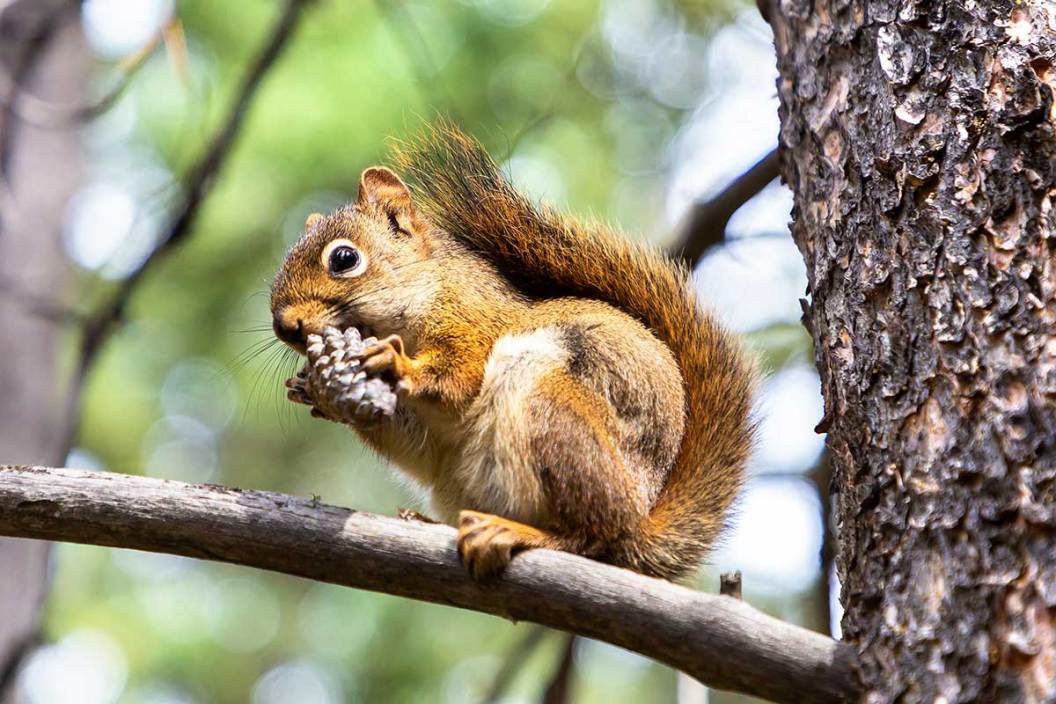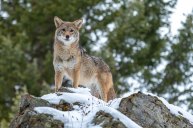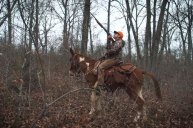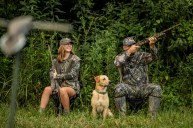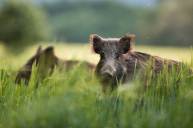It's autumn in the Rockies, and archery elk season is in full swing. After hours of searching, you finally glass up a legal bull, and you begin to make a move on him. Finally, you locate a concealed spot with several decent shooting lanes. You let out a few more cow calls, and the bull bugles in response—he's coming this way.
First, you see his tines getting closer through the dense brush. Then, a pine squirrel scurries down the tree next to you and lets out a loud alarm call. "Shush, shush!" you think to yourself. But in that short moment when you turned to look at the screaming squirrel, the elk saw your head move and high-tailed it off the ridgeline. Ever since then, you've had a vendetta against these tasty little cuties.
Now that you've decided to become a squirrel hunter (or maybe assassin is a better word), it's time to learn some of the best techniques for pine squirrel hunting in Colorado. These furry critters are not only fun to hunt, but a limit of them makes for great table fare, too. Here's some advice for hitting the elk woods in search of the non-elusive pine squirrel.
Preparing to Hunt Pine Squirrels
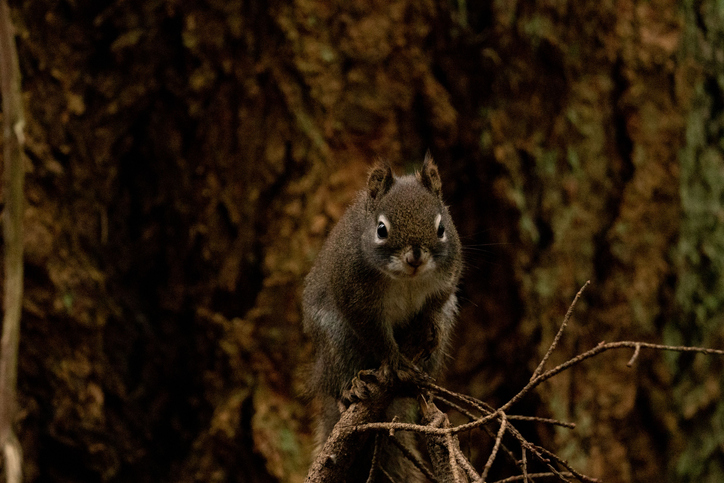
To hunt pine squirrels in Colorado, you'll need an active hunter's safety certification, a small game hunting permit, and a habitat stamp. If you're a resident, this will run you about $40. If you're a nonresident, an annual small game license and habitat stamp will cost approximately $96. With Colorado's small game season running from Oct. 1 through the end of February, the cost of the tag is well worth it even if you only make it out to hunt a few times during the season.
Additionally, blaze orange is not required in Colorado for small game hunters. However, it's greatly recommended, especially if a big game season is open at the same time.
Scouting for Pine Squirrels
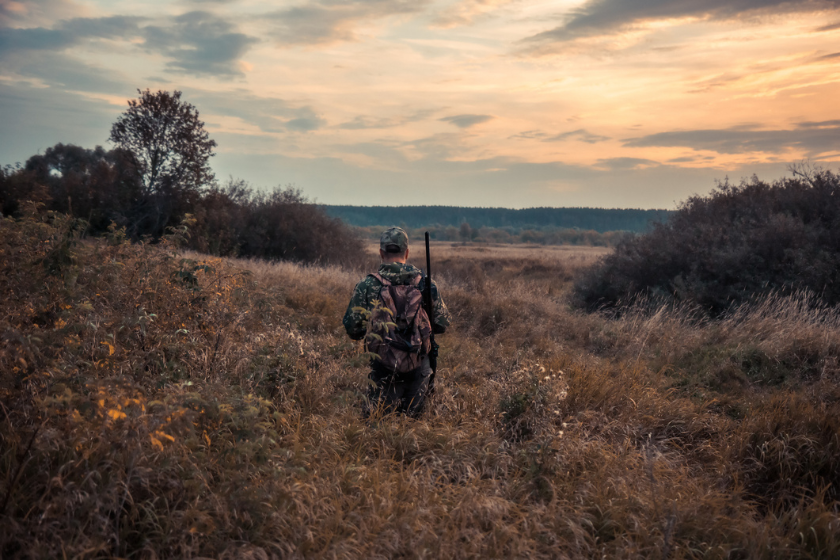
If you hunt big game in Colorado, you might skip this step altogether. Through your travels searching for elk and mule deer, you've likely stumbled across sections of woods chock-full of pine squirrels. If that's the case, prioritize hunting those high-density spots first. Not only will you likely get a few squirrels, but your big game spots will be a little quieter, too.
If you're in need of squirrel hunting spots, I recommend going for short hikes off-trail in spruce and pine forests. Pine squirrels love to eat the cones formed by conifers and will nibble them off branches so they can cure on the ground before they're stashed away for the winter. Personally, I find that it's easiest to scout for squirrels by sound. You can listen for the sounds of dropping pine cones, chattering squirrels, tiny claw sounds scrambling up tree bark, and light hopping noises on the dry forest floor. They're noisy creatures that are detectable if you're within earshot.
Of course, you can also scout for squirrels by sight. They're easy to see when they jump from limb to limb, stop mid-climb to stare or chatter at you when you walk by, or scurry along the ground. You can also look for squirrel middens. Middens are formed when squirrels find a good cone-producing tree, remove the outer hull of the cones, and drop the exterior cone scales into a giant pile on the ground. Squirrels will hide themselves and their cached food inside of middens, making them excellent places to ambush an unsuspecting pine squirrel.
Best Firearms for Squirrel Hunting
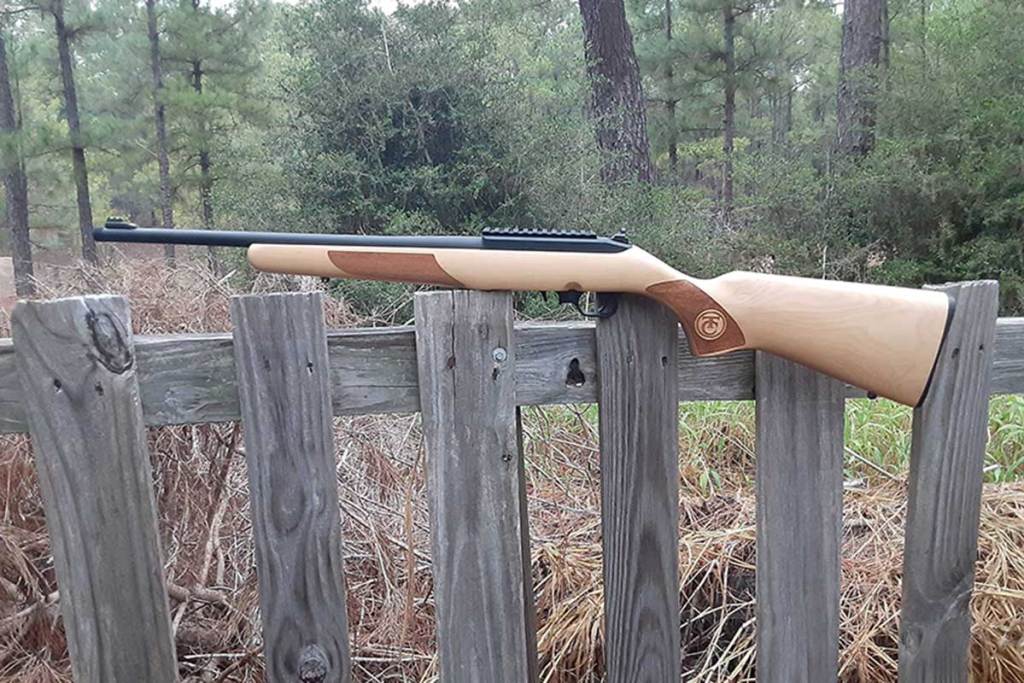
Photo by Eric Pickhartz
Generally, there are two good ways to shoot squirrels. One way is with a shotgun. A small-gauge shotgun such as a 20, 28, or .410 is a common option when it comes to squirrel hunting. You can swing through the small moving target, pull the trigger, and swat them with a spray of shot. However, I find this punctures the hide and can ruin their tiny quarters of meat; plus, it can be difficult to find and remove every shot pellet.
I prefer small-caliber rifles when it comes to pine squirrel hunting. Both .22s and .17s are great options. By using a small-caliber rifle with hollow-point small game cartridges, you can aim for headshots on these tiny targets. Headshots keep hunters from accidentally ruining meat quarters; plus, they keep the hide intact in case you want to use it for fly tying, home decor, or just to preserve for fun. Thankfully, you can pick up a used .22 for less than $200. Recently, I bought a brand new .22 revolver to keep on my side while recreating outdoors just in case I see a small game animal. This investment cost me just $150, and it's already proven itself as a great squirrel gun.
When and How to Hunt Squirrels in Colorado
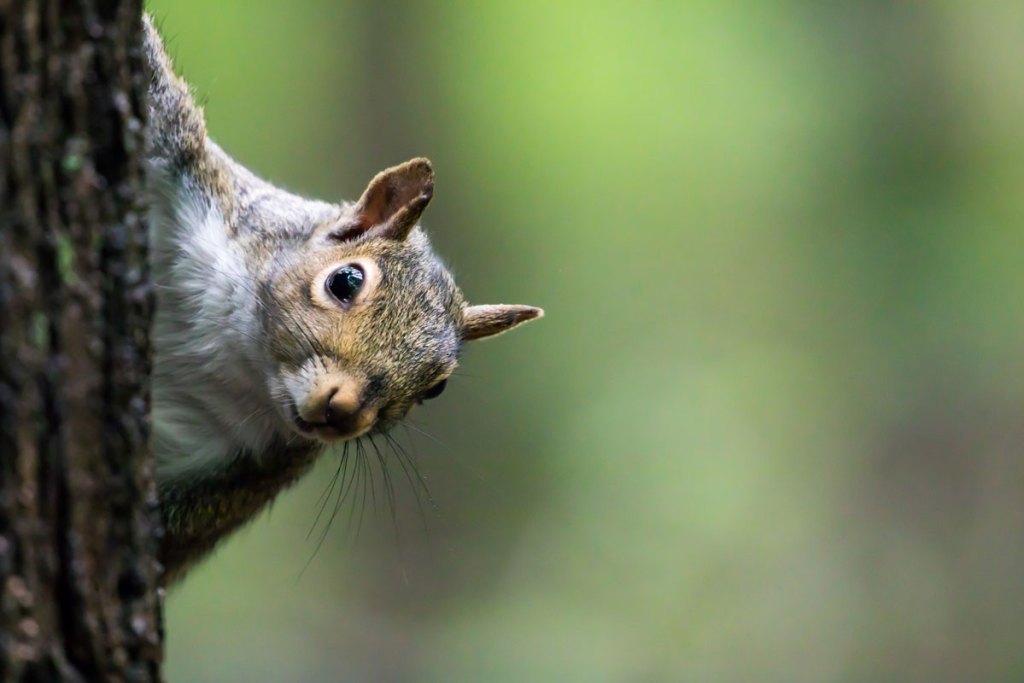
Unlike other types of hunting, squirrel hunting is incredibly casual. There are no 3:00 a.m. wake-up calls, frigid hikes through the dark to get to your spot, or lengthy travel times to reach your hunting grounds. Instead, you can enjoy sleeping in til 8:00 a.m., eating a delicious mid-morning breakfast, and hitting the woods whenever you like.
In my neck of the woods, I find that pine squirrels are most active around 10:00 in the morning. Usually they're out hopping around, clipping pinecones off trees, chattering, calling, and feeding. They tend to not be very wary of humans; you really can just walk up to them until you're within safe shooting distance and pull the trigger whenever you're ready. By mid-afternoon, things tend to slow down. One thing to note is that squirrels do not like wind. Generally, I find them on still, clear days with bright sunlight and calm weather. When it's windy or rainy, I rarely find squirrels at all. However, hunting them in light snow is definitely possible and lots of fun. It gets even easier to find squirrels when there's fresh snow because their prints and freshly dropped pinecone hulls are quite visible.
If you're lucky enough to bag a few squirrels, get ready to enjoy a tasty wild game meal. Pine squirrel meat tastes great when braised, added to soups, or pulled. I always let my friends try a few bites before I inform them that they're eating pine squirrels. Those looks of shock and delight are well worth it for a morning spent in the woods.
